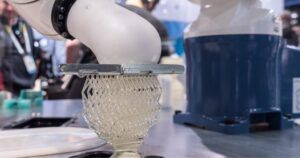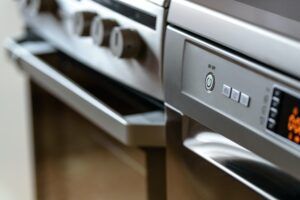In our homes, we can find many products made from plastic (home appliances p.e). This is because plastic has become a very cost-effective and user-friendly material to work with. However, not all products are made from the same type of plastic, as they vary in their properties and uses.
Certainly, not all plastics have the same composition, which is why some are more sustainable than others. Let’s review the most commonly used types of plastics in households, identify the more sustainable ones, and discuss why it’s important to choose these types of polymers.
Get to know the plastics that surround your everyday life
Before delving into the most prevalent types, it’s worth understanding the reasons behind the widespread use of plastics in homes. The reality is that there are numerous factors contributing to their popularity in product development.
Firstly, plastics are often lighter than metals, which helps reduce the weight of devices, making them easier to transport and install. Additionally, they tend to be more durable than other materials like glass and are resistant to corrosion.
Types of plastics frequently found in the home
There are various types of plastics with different properties that are commonly used in the manufacturing of home appliances. Among the main types are:
Polypropylene (PP)
It’s a relatively lightweight plastic that is also resistant to both temperature and chemicals, which is why you can find it in appliances like blenders, food processors, and in kitchenware such as cups, food containers, and corkscrews. It’s also commonly used in both internal and external components of washing machines and dishwashers.
Polycarbonate (PC)
Polycarbonate, on the other hand, is one of the most commonly used plastics due to its strength and high resistance to breakage. It’s a plastic capable of withstanding impacts and high temperatures. It is often used in appliances that need to endure both cold and heat, such as coffee makers, electric kettles, and blender jars.
High-Density Polyethylene (HDPE)
HDPE is a highly chemical-resistant plastic that is also corrosion-resistant in general. It is odorless, tasteless, and non-toxic. For these reasons, it is commonly found in milk bottles, detergent bottles, and other containers that typically hold liquid products. Additionally, it is quite lightweight and flexible, which makes it suitable for other products such as helmets and even toys.
Acrylonitrile Butadiene Styrene (ABS)
Probably one of the most commonly used plastics in household appliances and devices. This rigid and durable plastic is widespread because it’s used to manufacture the casings of all kinds of appliances, including vacuum cleaners, mixers, blenders, juicers, hairdryers, and many others.
Polyvinyl Chloride (PVC)
This resilient and flexible plastic is used in home appliances, specifically in the insulation of their electrical cables. It is also present in pipes and other products that require flexibility.
Which ones are the most sustainable?
Undoubtedly, there is a wide variety of plastics used in the home. Many of them can be reused, which reduces environmental pollution.
The most important factors in determining whether a plastic is sustainable or not are its manufacturing process, recyclability, and biodegradability. Keeping this in mind, among the most common plastics in the home that are also the most sustainable are:
Polyethylene
High-Density Polyethylene (HDPE), when recycled, is used to make new containers, packaging, and even furniture. On the other hand, Low-Density Polyethylene (LDPE) is often turned into bags when recycled. Both are relatively easy to recycle.
Polypropylene
This plastic is sustainable due to its recyclability, which allows it to be recycled up to 5 or 6 times. In the recycling process, it is crushed, cleaned, and melted into small plastic pellets, which are then subjected to various processes and prepared for use in creating new items. When recycled, it is used to manufacture packaging, containers, caps, and other everyday products.
Polycarbonate
This plastic is not only easy to recycle but also has a relatively low level of pollutant emissions. However, due to the presence of BPA, it is not as commonly used in products that come into direct contact with food. It is not biodegradable, but it can be melted and reused without issues.
Plastics: a common material at home
These plastics are considered sustainable as they can be recycled, which helps reduce the amount of waste ending up in landfills. Moreover, they have an almost negligible toxicity level, meaning they are not harmful to the environment.
Today, we use plastic more than ever in our homes. However, despite being a very common material, it’s essential to start recycling it to reduce pollution levels in the short and long term.
At Idelt, we specialize in prototyping, mold manufacturing, and injection molding. We take care of your project in any of its phases to assist you in turning your idea into a reality.







